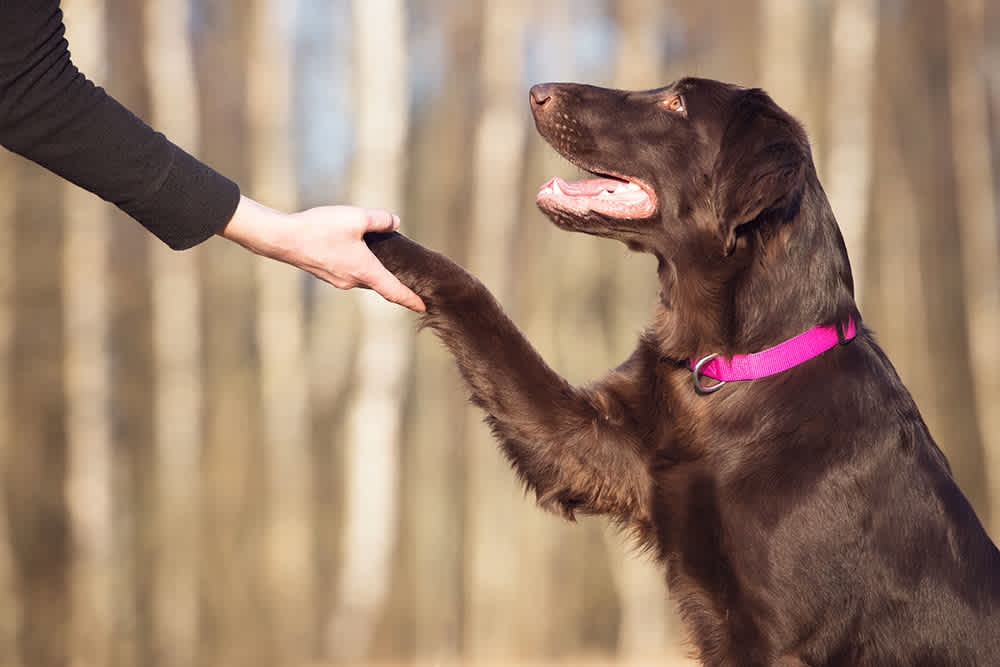Index Surge: Amplifying Your Insights
Stay updated with the latest trends and news across various industries.
Barking Up the Right Tree: Training Tips Your Dog Will Actually Love
Unlock the secrets to a happy pup! Discover fun and effective training tips your dog will adore in Barking Up the Right Tree.
Five Fun Training Games to Engage Your Dog's Mind
Keeping your furry friend mentally stimulated is just as important as physical exercise. Engaging your dog’s mind can prevent behavioral problems and strengthen your bond. Here are five fun training games that will challenge your dog and keep their mind sharp:
- Hide and Seek: This classic game is not only fun for you but for your dog too. Have your dog stay in one area while you hide somewhere in the house. Once you're hidden, call your dog's name and let them find you!
- Treasure Hunt: Hide treats around your home or yard, encouraging your dog to use their nose to discover the hidden treasures. This stimulates their natural instincts and keeps them engaged.
- Puzzle Toys: Invest in interactive toys that dispense treats. These toys challenge your dog's problem-solving skills and keep them busy.
- Follow the Leader: Teach your dog to follow your lead by walking in different directions and giving commands. It reinforces obedience while making it a fun game.
- Obstacle Course: Create a simple obstacle course with household items. Guide your dog through the course, rewarding them with treats for completing each section.

How to Use Positive Reinforcement to Enhance Your Dog's Training
Positive reinforcement is a powerful training technique that can significantly enhance your dog's learning experience. This method involves rewarding your dog for desirable behaviors, making them more likely to repeat those actions in the future. To implement positive reinforcement effectively, start by identifying the behaviors you want to encourage, such as sitting, staying, or coming when called. Use a combination of treats, verbal praise, and affection to reward your dog immediately after they perform the desired behavior. Consistency is key; the more consistently you reward your dog, the stronger the association between the behavior and the reward will become.
In addition to basic commands, positive reinforcement can also be used to address behavioral issues, such as barking or jumping. To modify these behaviors, it's essential to redirect your dog's energy towards more appropriate actions. For instance, when your dog begins to bark excessively, calmly ask them to sit, and reward them with a treat when they comply. This not only teaches them what you expect but also builds a stronger bond through trust and mutual respect. Remember, training sessions should be kept short and enjoyable for both you and your dog to maintain engagement and enthusiasm throughout the learning process.
Common Training Mistakes and How to Avoid Them
When it comes to training, many individuals often fall into the trap of making common training mistakes that can hinder their progress and lead to injuries. One prevalent mistake is neglecting proper warm-up and cool-down routines. Failing to prepare your body for intense activity can significantly increase the risk of strains and sprains. To avoid this, always incorporate a mix of dynamic stretches before your workout and static stretches afterward. Additionally, be mindful of the following common training mistakes:
- Skipping rest days
- Overtraining specific muscle groups
- Not maintaining proper form
Another significant aspect of avoiding common training mistakes involves setting realistic goals. Many people tend to jump into an intense training regimen without assessing their current fitness levels, leading to burnout and disappointment. Instead, establish clear, achievable objectives that allow for gradual progression. It’s also beneficial to track your workouts and adjust your routine as necessary. Remember, consistently evaluating your training methods will not only help you avoid pitfalls but also enhance your overall performance and well-being.